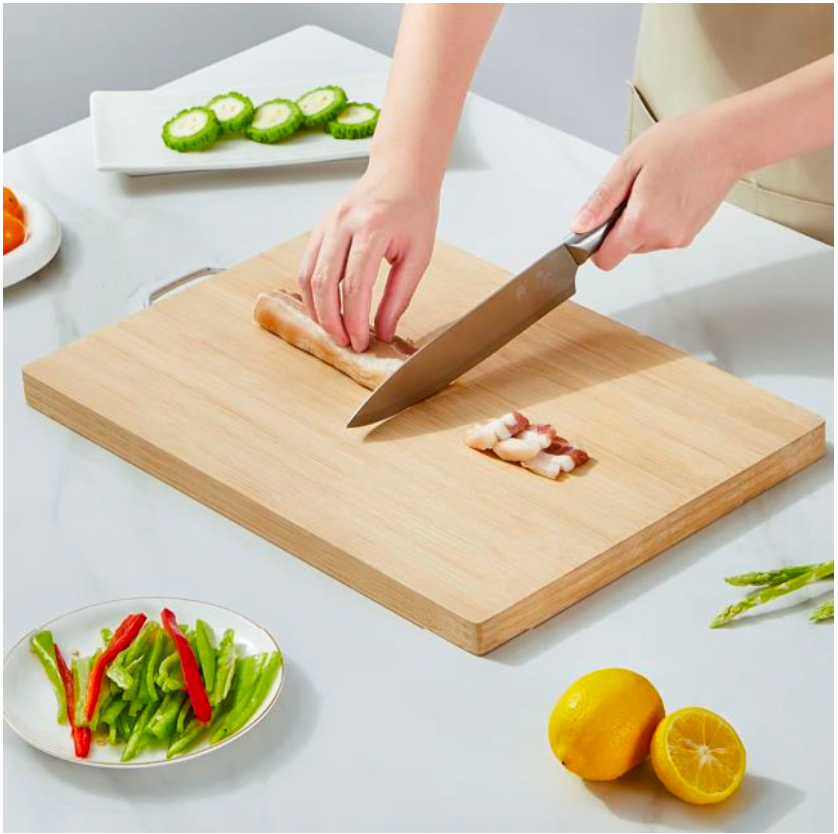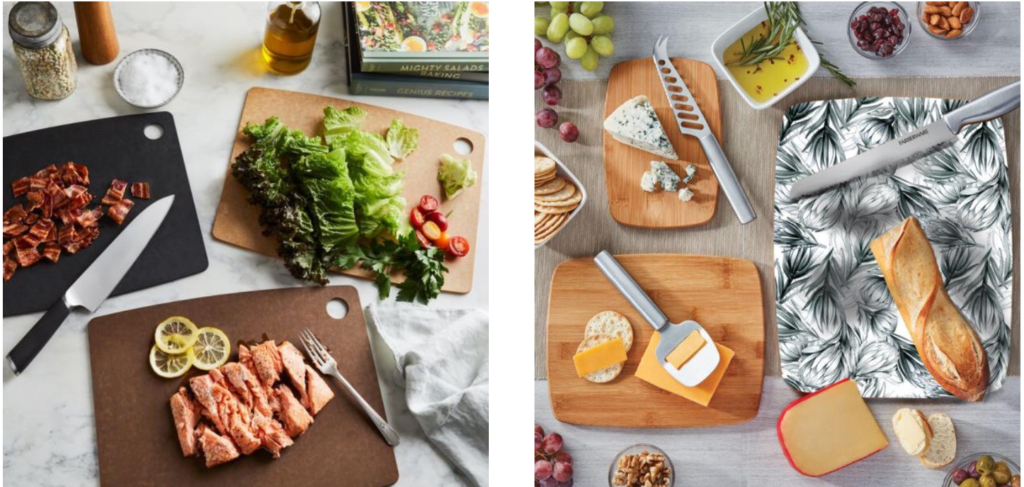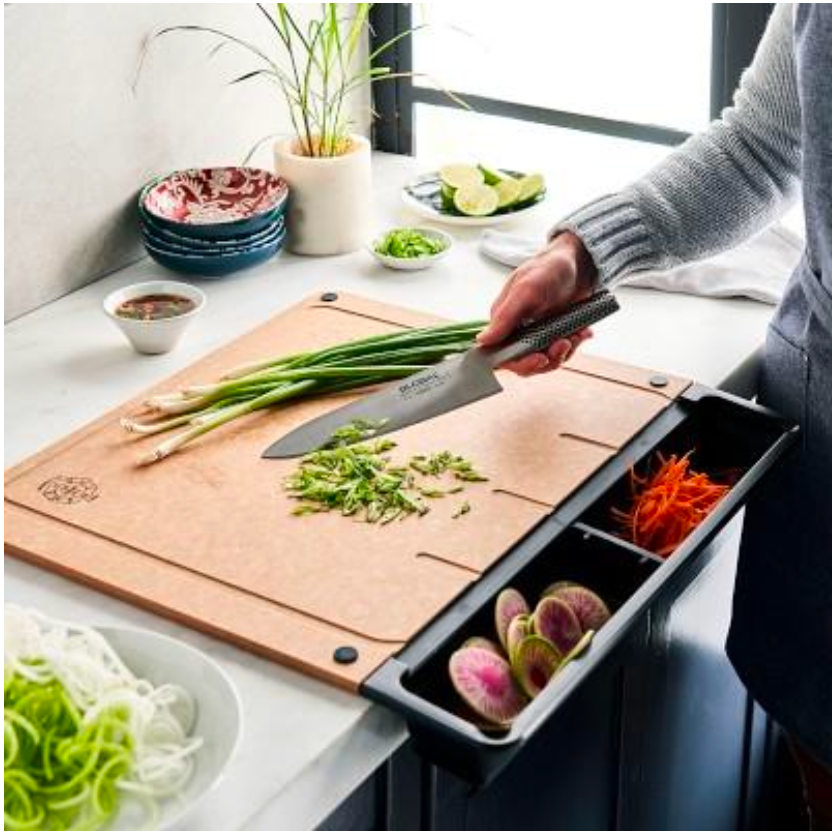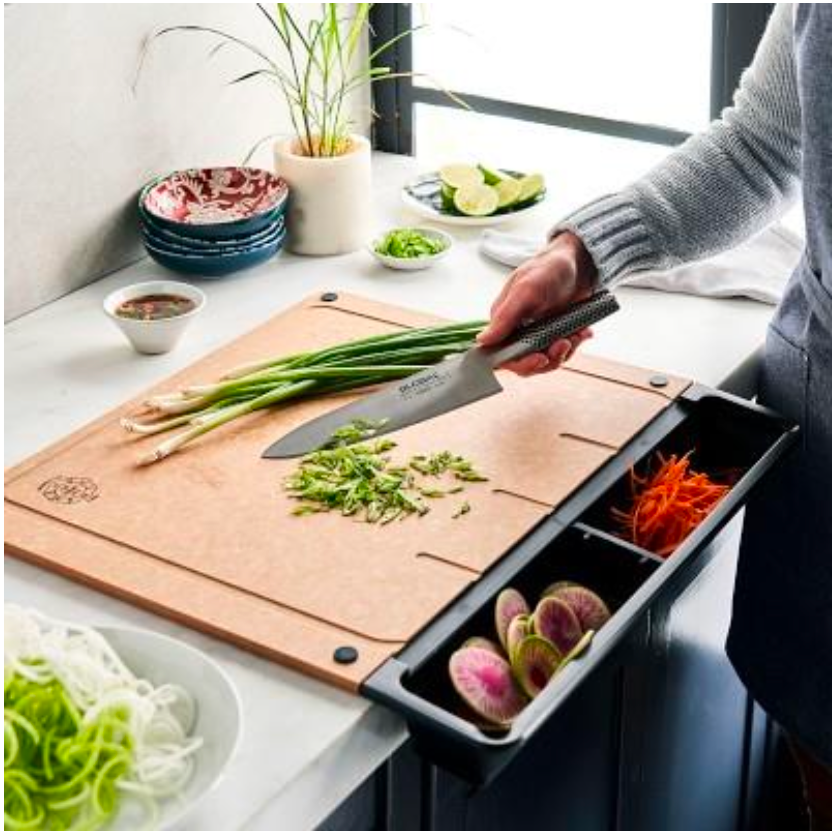“Cutting Boards Decoded: A Comprehensive Guide to Types, Care, and Choosing the Best for Your Culinary Adventures!”

In the realm of culinary creation, a good cutting boards stands as the unsung hero, providing the foundation for every chop, slice, and dice. The importance of this seemingly simple tool extends far beyond its surface, influencing both the efficiency of meal preparation and the longevity of kitchen knives.
Types of Cutting Board
A culinary journey through cutting board unveils a diverse array of materials, each with its unique characteristics and considerations. From traditional wooden boards to modern glass and composite options, understanding the benefits of each type is crucial for a well-equipped kitchen.
Wooden Cutting Board
Advantages and Characteristics: Wooden boards offer a natural, knife- friendly surface that is gentle on blades. They also possess natural antimicrobial properties, reducing the risk of bacterial contamination.
Types of Wood Used: Maple, teak, and bamboo are popular choices, each bringing its unique blend of durability and aesthetics to the kitchen.
Proper Care and Maintenance: Regular oiling and avoiding submersion in water are key to preserving the life of wooden boards.

Plastic Cutting Board
Benefits: Plastic boards are lightweight, dishwasher-safe, and come in vibrant colors. Their non-porous surface makes them resistant to bacterial growth, enhancing hygiene.
Also Read : SMOKELESS FIRE PITS
Hygiene Considerations: The ease of cleaning and sanitizing makes plastic cutting board a practical choice, particularly for handling raw meat.
Choosing BPA-Free Options: Opting for BPA-free and food-safe plastic ensures that no harmful chemicals leach into food during preparation.
Bamboo Cutting Board
Sustainability Aspects: Bamboo is a renewable resource, making bamboo cutting boards an eco-friendly choice.
Durability and Knife-Friendly Features: Bamboo is naturally durable and gentler on knives than other hardwoods.
Proper Care: Periodic oiling and avoiding prolonged exposure to moisture contribute to the longevity of bamboo cutting boards.
Glass Cutting Boards
Aesthetic Appeal and Modern Design: Glass boards add a contemporary touch to the kitchen and are easy to clean.
Preserving Knife Edges: While visually appealing, glass can be harsh on knife edges, leading to quicker dulling.
Drawbacks and Limitations: Potential for chipping or breakage and a noisier chopping experience are considerations with glass cutting boards.
Also Read : TOASTER OVENS
Composite Cutting Boards
Overview of Composite Materials: Cutting boards made from composite materials combine durability with resistance to warping.
Advantages: Their non-porous surface is resistant to bacteria, and they are less prone to warping than traditional wood boards.
Cleaning and Maintenance Tips: Composite boards are typically dishwasher- safe, making them easy to clean, and periodic oiling helps maintain their integrity.

Specialty Cutting Boards
Designed for Specific Purposes: Specialty boards, such as those for meat, vegetables, or fish, cater to specific culinary needs.
Features: Grooves for collecting juices, handles for easy transport, or built-in scales for precise measurements are common features of specialty cutting boards.
Choosing the Right Cutting Board
Factors to Consider: Size, thickness, and intended use are essential considerations when selecting a cutting board.
Matching to Different Knives: Different types of knives require different cutting board surfaces. For example, harder knives pair well with softer cutting boards to preserve their edges.

Popular Cutting Board Brands
Trusted for their commitment to quality and durability, John Boos cutting boards are renowned for their premium hardwood construction, providing a reliable surface for any culinary task. OXO, a household favorite, offers innovative designs with features like non-slip edges and juice grooves, combining functionality with user-friendly design. Epicurean, known for its eco-friendly composite boards, boasts a reputation for sustainability without compromising on performance, making it a top choice for environmentally conscious home chefs.
In conclusion, the culinary stage is incomplete without a reliable cutting board. Embark on your culinary adventures, the call to choose the right cutting board resonates—a decision that impacts not just the efficiency of your kitchen but the artistry of your culinary creations.












0 thoughts on “CUTTING BOARDS”